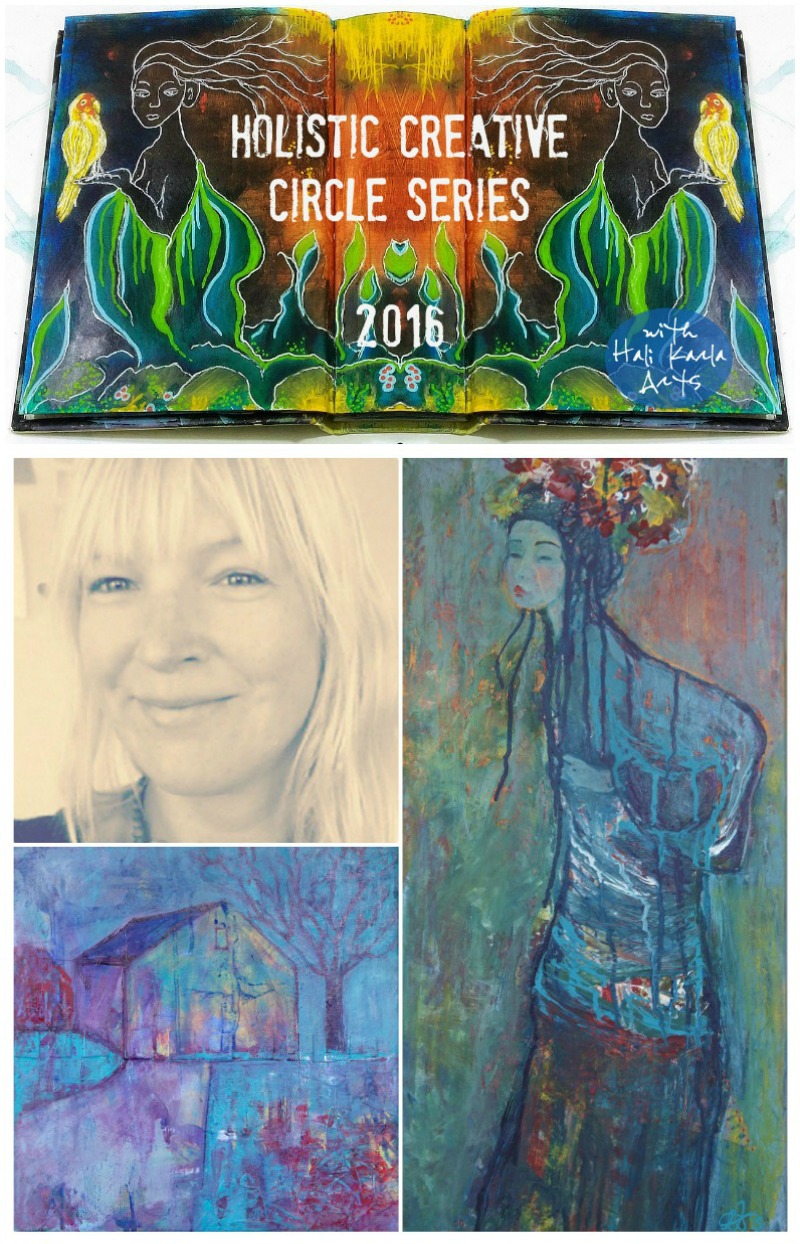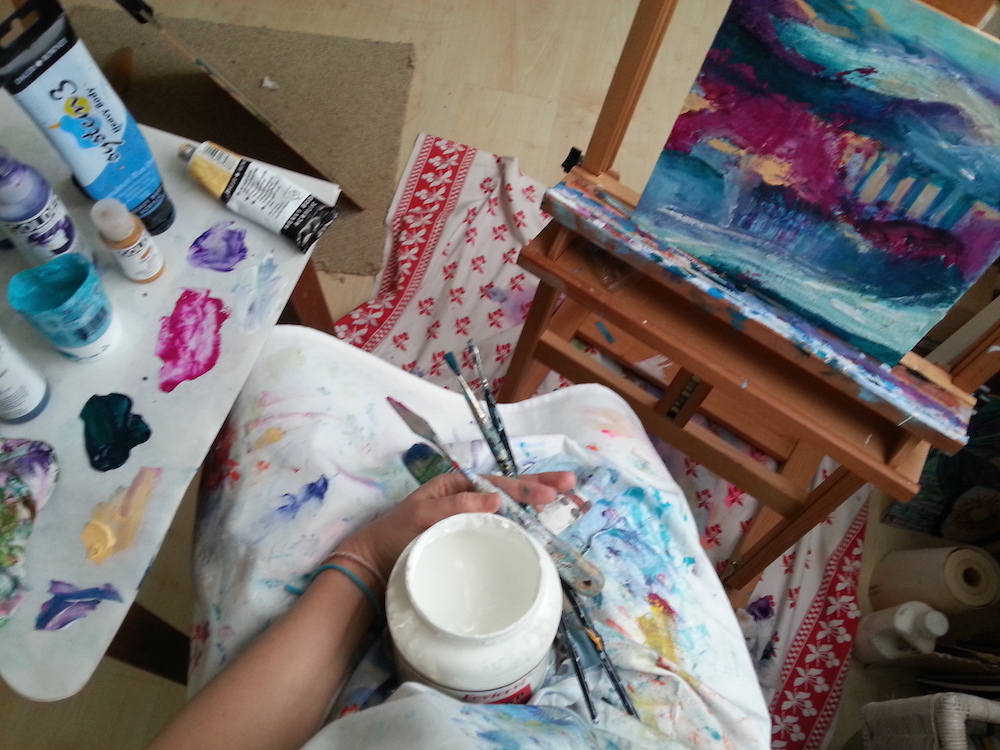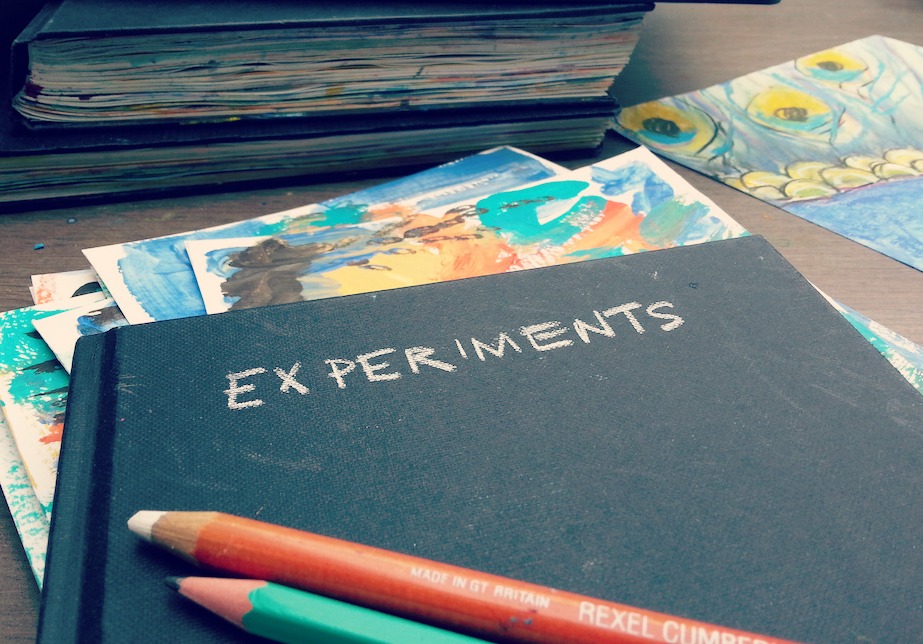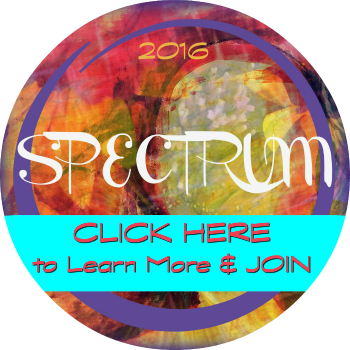Holistic Creative Guest Post with Tara Leaver :: What Science Can Bring To Your Art Practice
 Today's Holistic Creative Circle guest is the soulful artist, Tara Leaver.
Today's Holistic Creative Circle guest is the soulful artist, Tara Leaver.
If you are ever looking for heart-centered honesty about the creative process, Tara is a source for so much perspective - as well as pure inspiration simply for her devotion to the art-making practice and the way she integrates so much from the beautiful landscape she lives in.
She shares creative inspiration and musings at her blog regularly... which makes it extra special that she's offered some of her content for a Holistic Creative Circle guest post here today.
Enjoy!
What science can bring to your art practice
guest post by Tara Leaver
Science was my worst subject at school, after maths. My brain just doesn’t seem to want to get on board with that way of thinking. I simply couldn’t get interested in the component parts of cells or the periodic table, much less get any of it to stick. But one thing I’ve always loved, since I was a tiny curious girl making mud pies in the garden and mixing ‘potions’ from all the various products in the bathroom, is experiments.
The thing about experiments is that they offer so much leeway; they allow for things to not turn out how you thought they would. In fact, that’s kind of the point of them; you start with an idea, a hypothesis, and then you take steps to see if it can be supported outside your brain. If it can’t, No Big Deal. You can tweak it, or try something else.
This has stood me in very good stead over the years since I rediscovered my creative side, and it’s something I encourage on my blog and in the courses I run. The reason for this is partly because it’s fun, but mainly because it’s forgiving. And being hard on ourselves and the things we create is a huge issue for many people. Adopting an experimental mindset can rescue us from so many of the common creative blocks.
Stuck for inspiration? Try an experiment. Scared of making bad art? Call it an experiment! Not sure what to do with a painting? Experiment! {Maybe on a piece of paper.} Too many ideas and don’t know where to begin? Pick one and call it an experiment. Got the fear about putting your work out there? Experiment with ways to do it that feel safer.

You get the idea.
The thing about art and creativity generally is it feels so very personal. And of course in a sense it is. If we’re making art from our heart and soul {as opposed to say, mindlessly copying}, it’s easy for it to feel Extremely Important, and that can give it a weight that tends to restrict us and take the joy out of things. I run up against blocks frequently, and taking an attitude of experimentation makes a huge difference to my experience of both process and outcome.
Being a scientist in the studio means the pressure is off. We can begin with a hypothesis, and if it doesn’t work out as we envisaged, that’s just information. It is nothing to do with our value as people or our abilities as artists. And in truth, I don’t believe an artistic practice without some off-the-rails experiments would be either satisfying or supportive of growth.
As adults we are typically afraid of failures, but without them how would we learn? Everything turning out exactly how we want all the time sounds good, but the times when that’s happened consistently for me in the studio, the novelty wore off surprisingly quickly! We need something to push against. The ‘failed experiments’ spur us on and help us grow as artists, if we allow ourselves to see them as experiments.
So maybe for your next venture into the studio {or at the kitchen table}, you could try donning a metaphorical lab coat and create an experiment!
Here’s a simple way to break it down:
Begin with an idea, nothing too grand. Perhaps you have a new material you’ve been waiting to try, or you’d like to see what happens if you combine two that aren’t usually used together, or there’s a style you’d like to have a go at. Keep it small and low key {at least at first} to minimise the wastage gremlins.
Declare your intention to experiment without attachment to the outcome, remembering that if it ‘goes wrong’ it just means the hypothesis or the approach needs tweaking, not that you are no good at art. A good mantra is something like ‘I’m just going to see what happens if I…..’
Start! And stay as much as possible in an observer mindset as it progresses. If it doesn’t go as you’d hoped, allow yourself the option to tweak it, start again, cut it up, or chuck it and move on.
And if you like you can watch me having an experiment failure for proof that you’re not alone. :)

Being a scientist in the art studio is the best way I know to experience the freedom we want with our creativity; it encourages growth, promotes discovery, makes the art process easier and less onerous, helps teach us not to be attached to outcomes so much, and allows for the freedom of expression that feels so good.
Do you conduct experiments in the studio? I’d love to hear your perspective!
You can visit Tara at her site RIGHT HERE.
Tara is also one of our new teachers this year for Spectrum 2016!
You can join us and 40+ other teachers for a holistic-creative journaling adventure! Registration is open through November, and the program begins in May with access through 2017 ::
